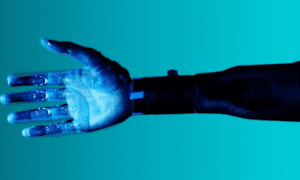The biggest complaint people have with cryptocurrencies concerns their volatility. When price swings of over 20 percent are not uncommon for inter-day trading, it is difficult for cryptocurrencies to serve as anything more than investments or tokens. Utilizing cryptocurrencies as actual “stores of value” or “means of exchange” is essentially out of the question.
When you get paid or pay someone, you need to have an agreed-upon assumed value for the currency over the short to medium term. Within the enclosed U.S. dollar economy, $1 can be exchanged for products and services. Outside of the USD economy, $1 fluctuates somewhat in value, along with other currencies, but essentially retains a stable value over the long term.
A stablecoin is a currency with governance to prevent significant price volatility and enable transactions to take place. The U.S. dollar, in this way, is a prime example of a “stablecoin.” Much of this regulated value stems from the central governing agency, the Federal Reserve, which is able to manipulate interest rates to control the money supply, inflation and USD value. However, cryptocurrency stablecoins focus on decentralized organizations to regulate price based on controlling token supply and algorithmic adjustments for volatility.
Several stablecoins have launched over the past few years, most notably Tether, but there has yet to be an impressive implementation of stablecoin technology. Tether has missed the boat, due to a number of hacks against their network and because of a history of being non-transparent, preventing withdrawals and improperly managing their network. A strong stablecoin needs to account for complex networks of human actions and effectively control the price and volume of its network.
As many of the problems with Tether are coming to a head, TrueCoin is launching their stablecoin in early 2018, hoping to provide consumers with an effective technology for conducting transactions. The company has received investments from Stanford’s StartX accelerator program, FJ Labs and Blocktower Capital.
What sets TrueCoin apart from Tether and other stablecoins is their focus on transparency and legitimacy. People began to lose trust with Tether when they started censoring their bank information, releasing degrading quality audits and halting withdrawals. When a stablecoin (or any credit) is established, there is an implicit risk that collateral will drop in value and cue a collapse (e.g., the 1929 stock market crash based on margin and the 2008 housing crash based on low-quality mortgages). TrueCoin has set up an in-depth monthly audit to preserve transparency, prevent industry distrust and minimize risk for investors.
TrueCoin has established a plethora of legal and financial documentation to offer more rights to investors and users. They have also developed an extensive legal framework for collateralized cryptocurrencies. With this system, every backer has enforceable legal rights. Additionally, they have a growing network of fiduciary partners.
With government regulation and volatility as major concerns for the crypto industry, TrueCoin offers a glimpse at what the future of digital currencies holds. Transparency, legality and enforceable rights are crucial, along with the reduction of price variation. Their founding team, which includes members from Stanford, Palantir and Google, has approached crypto from a product-design perspective to develop the most effective digital currency possible.
Earlier iterations of stablecoins lacked the complex nuances that make such an economic system viable. As crypto and blockchain both mature as technologies, the product design behind each new network is likely to become more sophisticated and tailored toward real use cases.



















































